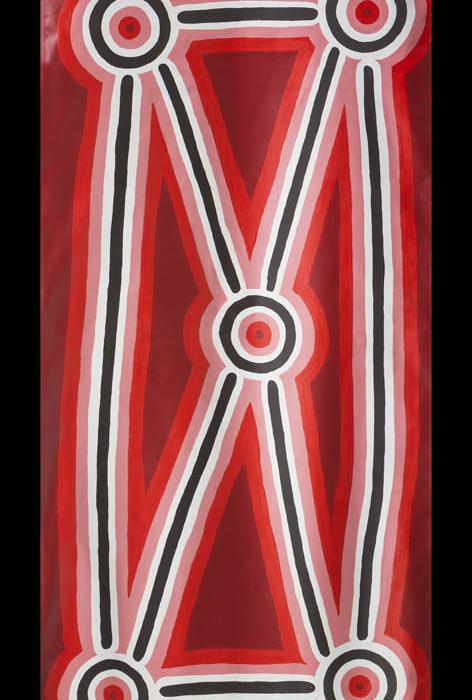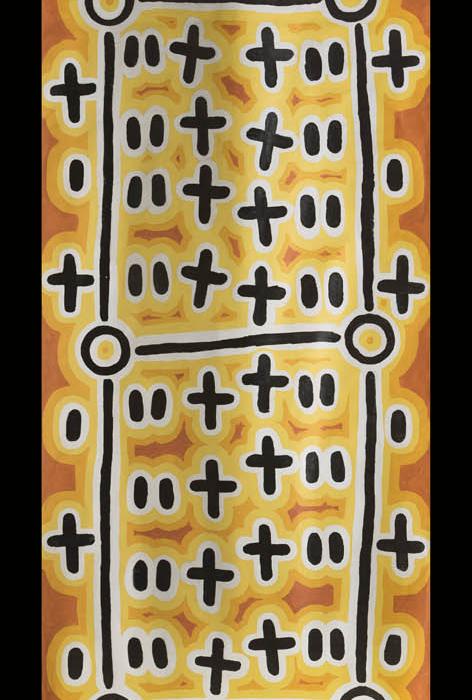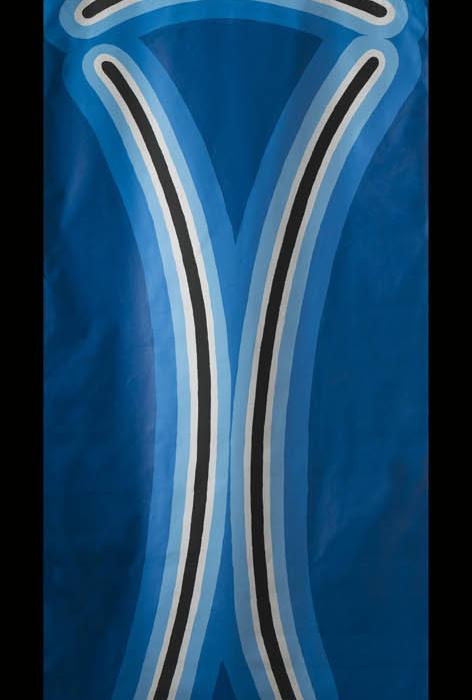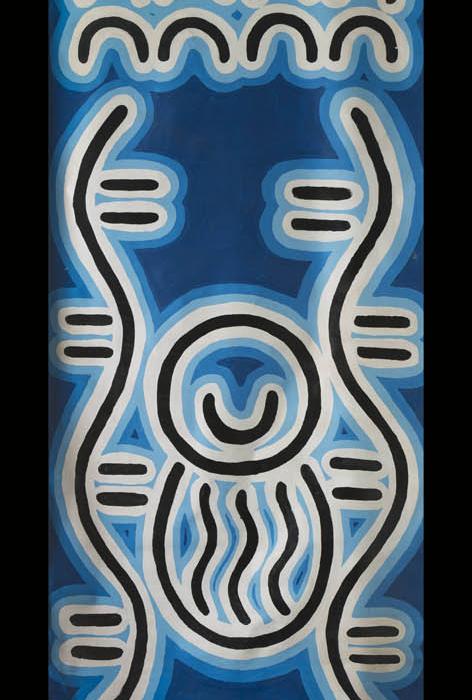Milpirri Banners Home Page
Lajamanu, Northern Territory, Australia
In 2005 a series of sixteen, three-metre high banners were created as the backdrop to the first Milpirri performance. In 2012 another eleven banners were added. The banners are like a set of family coat of arms to the Warlpiri people of Lajamanu; individuals are able to identify which banner belongs to them as they represent their family's Jukurrpa (dreaming). The dance and the banners bring to life the Warlpiri people of Lajamanu's Ancestral homelands of the Tanami Desert. Milpirri makes the invisible visible.
In 2018 we researched and gathered information contained within the context of the banners. Through a consultation process led by anthropologist Miles Holmes and Tracks Artistic Co-Director Tim Newth, we talked to families and elders about the banner designs and their meaning. We checked and cross-checked information, we looked at dreaming designs, and we made links to knowledge gathered by other linguists, anthropologists and researchers who have worked in Lajamanu over the past decades.
Creative Director: Wanta (Steve) Janpijinpa Patrick
Artistic Directors: Tim Newth and David McMicken
Researching Anthropologist: Miles Holmes
Website Designer: John Seward
Explore
Below you can explore the Milpirri banners. Enjoy clicking on the red highlighted words and you will be carried away into a richly Warlpiri Australia.
Warning: This website contains images and names of people who have passed away.
30 Year Relationship
Since 1988 Lajamanu and Tracks artists have been working together. The relationship has produced performances which have become an iconic part of the place and company, and the Milpirri performances are a prime example of this. The ongoing relationships built over this time are trusted and heartfelt. The 2018 Banner Project celebrates this 30 year relationship.
Banner Design Style
The Milpirri banners stylistically grew out of a collaboration between Lajamanu elder Freddy Jangala Patrick and Tracks artist Tim Newth. In 1989 Tim worked with Lajamanu artists on their first public murals. After completion of one with female elders the men decided it was their turn. After much debate, Jangala and Tim started painting dreaming designs significant to the Warpiri men (predominantly Ngapa (water) dreaming designs) onto a tank outside the Wulaign Outstation Centre. Jangala would paint the design in black and Tim would outline that in colour.
In 1992 for the first Lajamanu/Tracks performance in Darwin 'Lajamanu Kurra Karna Yani', Jangala and Tim created the back drop of three banners depicting three key dreaming for the Lajamanu area. The style found within the first men's mural and these three banners is now recognised as the basis for the Milpirri banner designs, even though the first Milpirri performance happened over half a decade after Jangala sadly passed away.
Read Freddy Jangala Patrick's biography.
Read about and see the first Lajamanu murals.
See the three banners from the performance Lajamanu Kurra Karn Yani.
Explore Further
The Milpirri / Lajamanu home page is full of links which will enable you to explore the richness and depth of this event and creative relationship between Tracks and Lajamanu.
Thank you
For your imput and support in 2018: Henry Jakamarra Cook, Lesley Jampijinpa Robertson, Jerry Jangala Patrick, Jeffrey Jakamarra Matthews, Dion Jangala Kelly, Mark Jupurrula Stephenson, Steven Wanta Jampijinpa Patrick, Lynette Napangardi Tasman, Myra Nungarrayi Herbert, Molly Napurrurla Tasman, Margaret Nungarrayi Martin, Annette Nampijinpa Patrick, Andrew Japanangka Johnson, Daniel Jupurrula Rockman, Willy Japanangka Johnson, Warnayaka Arts Centre, North Tanami Rangers, Central Lands Council, Chris and Noelene Murray. For your editing: Melissa Beit and David McMicken.
Company Partners
Tracks Inc is assisted by the Australian Government through the Australia Council, its arts funding and advisory body; and is proudly sponsored by the Northern Territory Government.
Project Partners
Building Better Regions Fund
Supporting Partners
Western Desert Dialysis





























